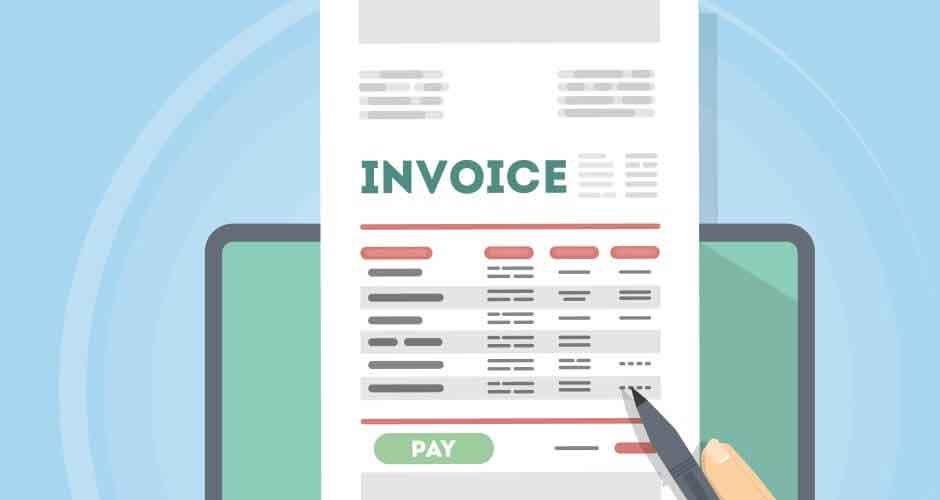Creating clear and concise invoices is crucial to maintaining a healthy cash flow when running a business or working as a freelancer. Whether you’re billing clients hourly or for specific projects, having professional invoicing practices ensures you get paid promptly and accurately. This article will provide valuable insights and best practices for creating professional and effective invoices to facilitate timely payments. Using these tips, you can streamline your invoicing process and maintain a positive relationship with your clients. Additionally, you can generate invoices quickly using online tools and resources.
Use a Professional Invoice Template
Using a professional invoice template sets the tone for your business and creates a consistent and branded look. It includes all the necessary information, such as your business name, contact details, client information, invoice number, and a breakdown of services or products provided. Utilizing a professional template ensures that your invoices are well-designed and visually appealing. You can find a variety of free or paid invoice templates online, allowing you to customize them to reflect your brand identity and professionalism.
Include Clear Payment Terms
Clear payment terms on your invoice are essential to avoid confusion and ensure prompt payment. Clearly state the payment due date, accepted payment methods, and any late payment penalties or early payment discounts. By providing transparent payment terms, you set expectations and encourage your clients to fulfill their payment obligations on time. This clarity helps build trust and minimizes the chances of payment disputes or delays.
Provide Detailed Service Descriptions
Always provide detailed descriptions of your services or products to avoid misunderstandings and disputes. Break down each item, including quantities, rates, and additional fees or expenses. This level of detail helps your clients understand what they are being charged for and minimizes the likelihood of payment disputes or confusion. It demonstrates your professionalism and attention to detail, enhancing your business’s trust and credibility.
Be Mindful of Formatting and Structure
Maintaining a well-structured invoice makes reviewing and processing easier for your clients. Use headings, subheadings, and sections to organize the information logically. Ensure consistent formatting for dates, amounts, and descriptions. A clean and professional layout enhances the readability and professionalism of your invoice. Consider using font styles and sizes that are easy to read, and avoid cluttering the invoice with unnecessary information or excessive design elements.
Include Contact Information and Payment Instructions
Make sure your contact information, along with your email address and phone number, are prominently displayed on the invoice. This makes it easy for your clients to contact you with questions or concerns. Additionally, provide clear and concise payment instructions, including the payment address, online payment options, and any necessary payment references. Providing multiple payment options, such as bank transfers or online payment platforms, can make it more convenient for clients to submit payments.
Double-Check for Accuracy and Errors
Before sending out an invoice, thoroughly review it for accuracy and errors. Check that all the information is correct, including the client’s name, address, and billed amounts. Pay attention to decimal points and ensure that all calculations are accurate. A meticulous review helps maintain professionalism and avoids confusion or payment delays. Taking the time to double-check your invoices demonstrates your commitment to accuracy and attention to detail.
Set a Professional Tone in the Invoice Message
Including a brief, polite message in your invoice can help reinforce your professionalism and maintain a positive client relationship. Express gratitude for the opportunity to work with the client and kindly remind them of the payment due date. A friendly and professional tone goes a long way in fostering a positive payment experience. Personalize the message to make it more human-like and reflect your brand voice.
Send Invoices Promptly
Timely invoicing is crucial for ensuring timely payment. Send your invoices promptly after completing the work or delivering the products. Sending out invoices promptly showcases your professionalism and organizational skills, while also ensuring a consistent cash flow for your business.Consider setting up a regular schedule for sending invoices, such as on a specific day of the week or at the end of each project. This consistency helps you stay on top of your invoicing and reduces the chances of forgetting or delaying invoicing.
Follow Up on Outstanding Invoices
If a payment becomes overdue, following up promptly and professionally is important. Send polite reminders to your clients regarding the outstanding payment. Clearly state the amount due and the payment due date. This proactive approach demonstrates your commitment to timely payment and helps expedite the collection process. Consider using a friendly but firm tone in your reminders, emphasizing the importance of settling the outstanding balance.
Keep Organized Records
Maintaining organized records of your invoices is crucial for accounting, tax purposes, and future reference. Keep a digital or physical copy of each invoice sent and received. Use a spreadsheet or accounting software to track invoice numbers, dates, amounts, and payment statuses. This organization helps you stay on top of your finances and simplifies the reconciliation process. Regularly update your records and create a filing system to ensure easy access to past invoices when needed.
Conclusion:
In conclusion, establishing professional invoicing practices is essential for any business or freelancer. By using a professional invoice template, including clear payment terms, providing detailed service descriptions, maintaining proper formatting, and incorporating contact information and payment instructions, you can create clear, concise, and easy to understand invoices. Prompt invoicing, following up on outstanding payments, and keeping organized records are key elements in ensuring a smooth invoicing process. Remember, when you generate invoices they must reflect professionalism. It is vital in maintaining strong client relationships. By following these best practices and utilizing available resources, such as online invoicing tools, you can streamline your invoicing process and enhance your overall business operations.






